This has to be the future of gaming laptops
Framework shows what notebooks should be like, and now I desperately want it to make a gaming laptop
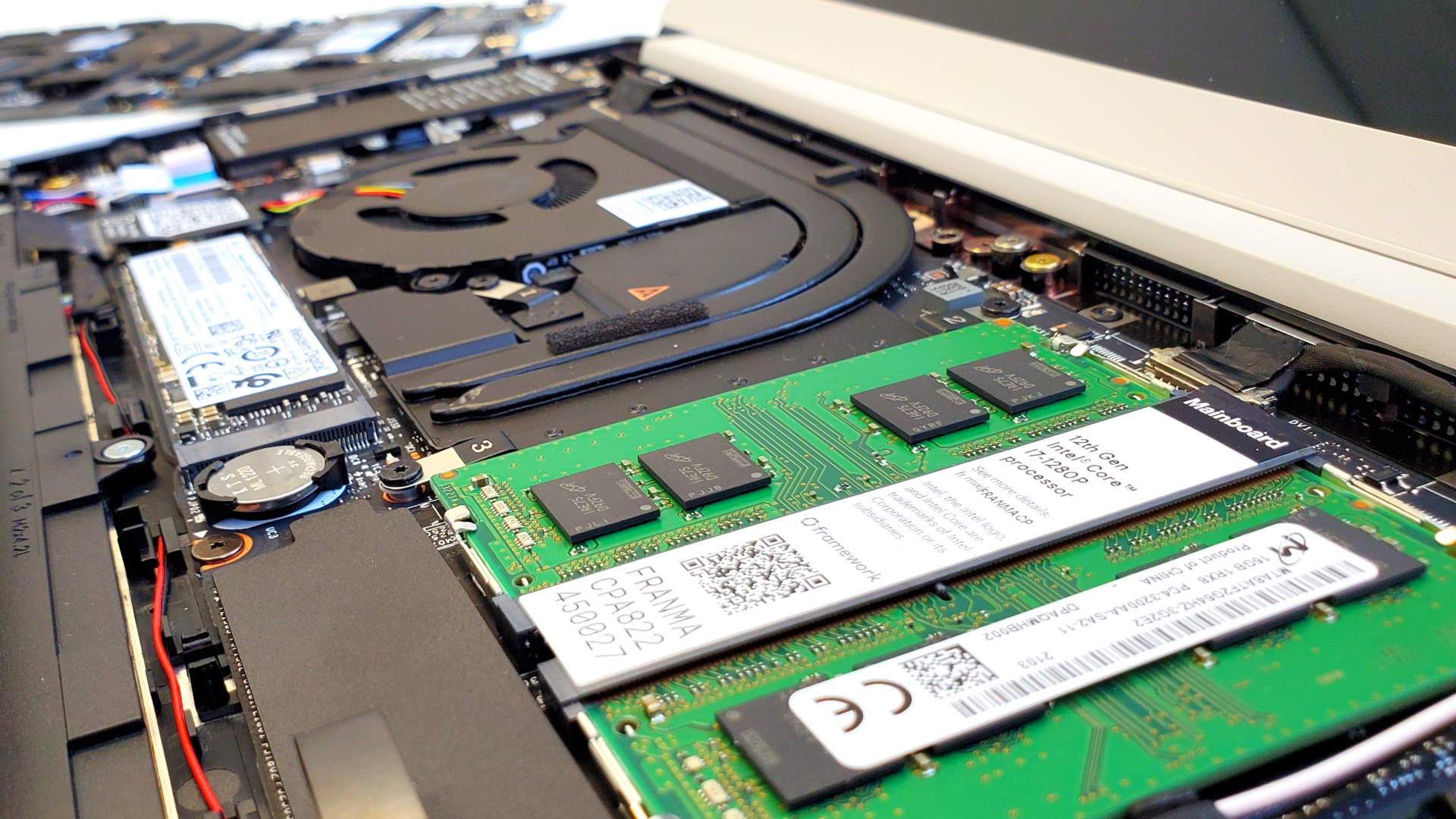
Just 15 minutes to upgrade. That's what Framework has promised. A mere 15 minutes to go from a laptop with an 11th Gen Tiger Lake platform inside it to an ultra-modern 12th Gen Alder Lake, armed only with the screwdriver that came in the box. That's pretty spectacular and a feat no other laptop manufacturer has delivered.
But a feat I've just achieved with this Framework upgrade kit, and it was a doddle.
I mean Alienware once promised upgradable laptops, but that didn't pan out too well after a class action lawsuit got filed against Dell for not actually being able fulfil its end of the bargain.
But the Framework Laptop has done it, giving owners of its first laptop the opportunity to completely upgrade their system to the latest Intel chips for as little as $449. Or as much as $1,049 if they want to go big and pick up the full 14-core, 20-thread Core i7 1280P that I've got here.
It's all about the whole right to repair thing, and about lessening the e-waste that inevitably comes from the aggressive upgrade cycle of PCs and our desire for the next big thing in technology. If you can just replace the motherboard of your laptop, like you might with your gaming desktop, then you don't have to throw away a perfectly fine keyboard, trackpad, screen, memory, storage, etc.
Follow PC Gamer on TikTok for more tech and gaming videos.
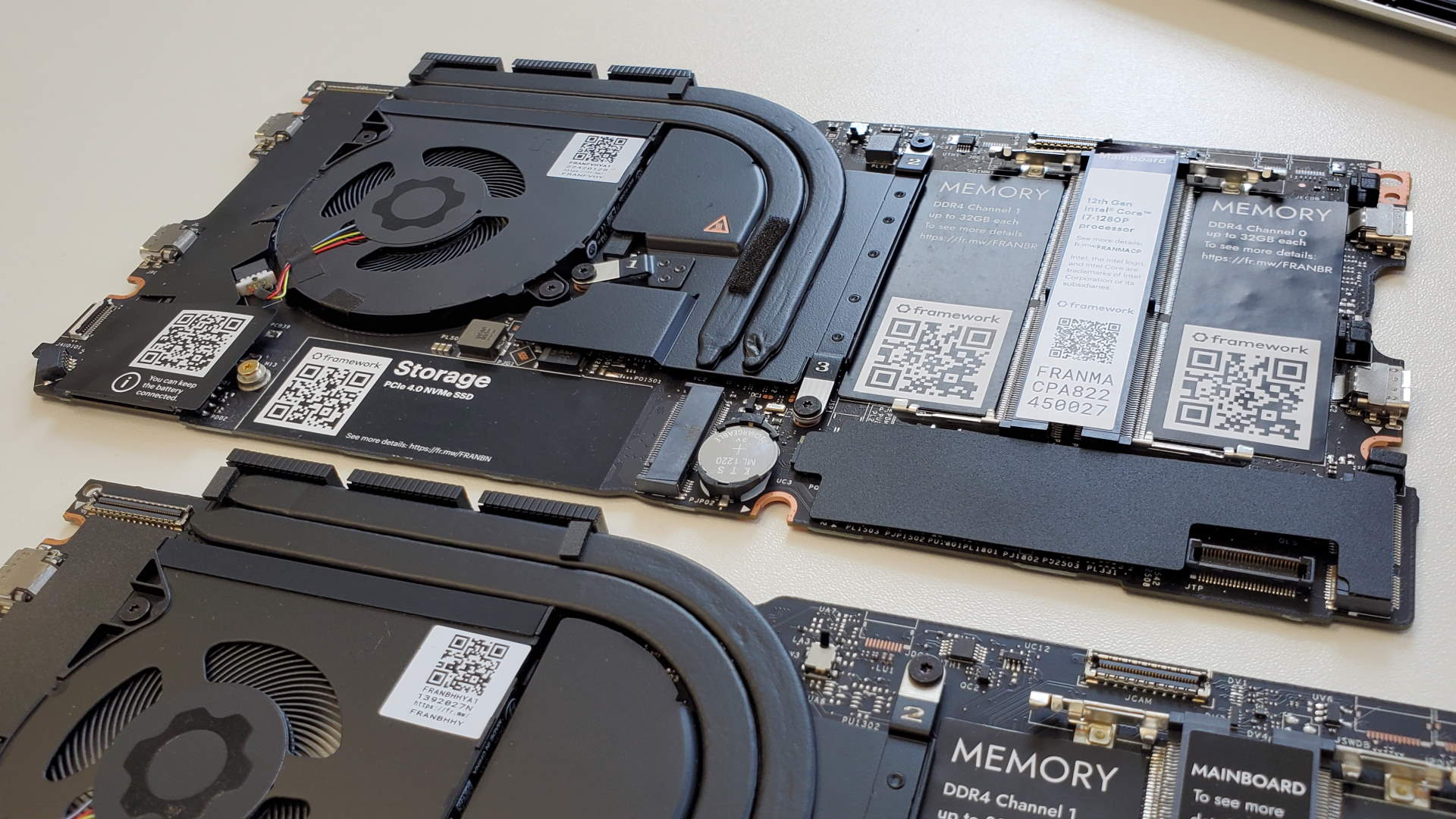
CPU: Intel Core i7 1280P
Cores: 6 + 8
Threads: 20
Graphics: Iris Xe 96 EU
Storage: 1TB Western Digital SNM730 PCIe 4.0
Networking: WiFi 6 or WiFi 6E, Bluetooth 5.2, Ethernet (optional module)
Display: 13.5-inch
Native resolution: 2256 x 1500
Ports: 4x user-expandable Expansion Cards
Weight: 1.3kg
Price: $2,049 | £2,049 (Mainboard only $1,049 | £1,049)
That's the joy of the Framework machine, but there's also the user configurability, too.
Keep up to date with the most important stories and the best deals, as picked by the PC Gamer team.
The unique design of the laptop means you have four different module slots in each side of the chassis, and a selection of different modules you can drop into them. These range from USB Type-C and Type-A modules, HDMI and full DisplayPort sockets, MicroSD readers, and now—due to popular demand—an ethernet port.
And these simply slide in and out, connecting into a USB Type-C connection on the mainboard inside. It means depending on what you're doing that day, whether you need wired internet or a video output, you can have the connections you need. It's smart, neat, and unlike some modular technology still feels like a robust physical object.
Yeah, you can replace and replace pretty much anything on the machine yourself, but that doesn't make it in any way flimsy. The magnetically attaching keyboard/trackpad top cover comes off easily without you having to crack any plastic to get at the innards of your laptop.
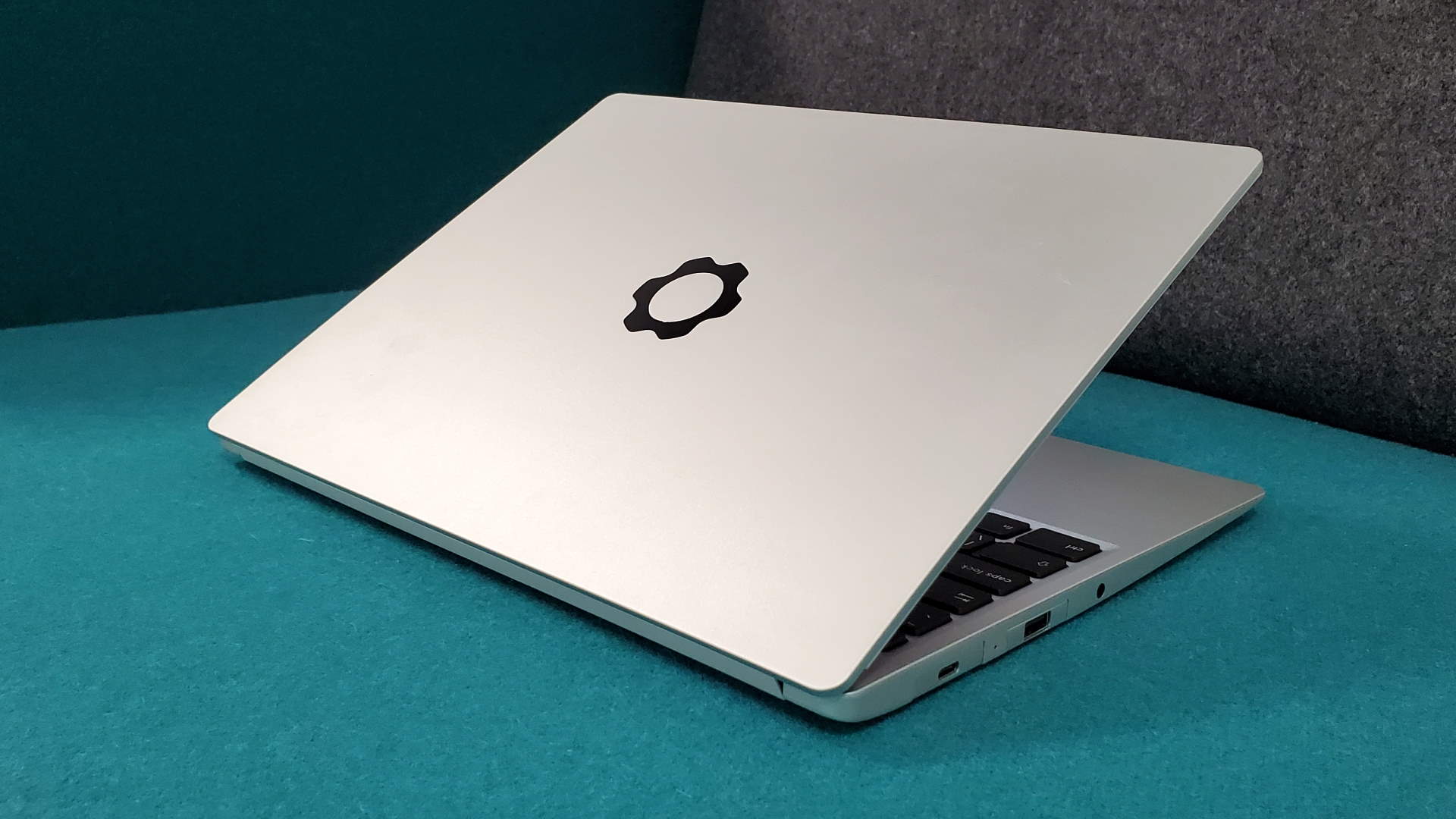

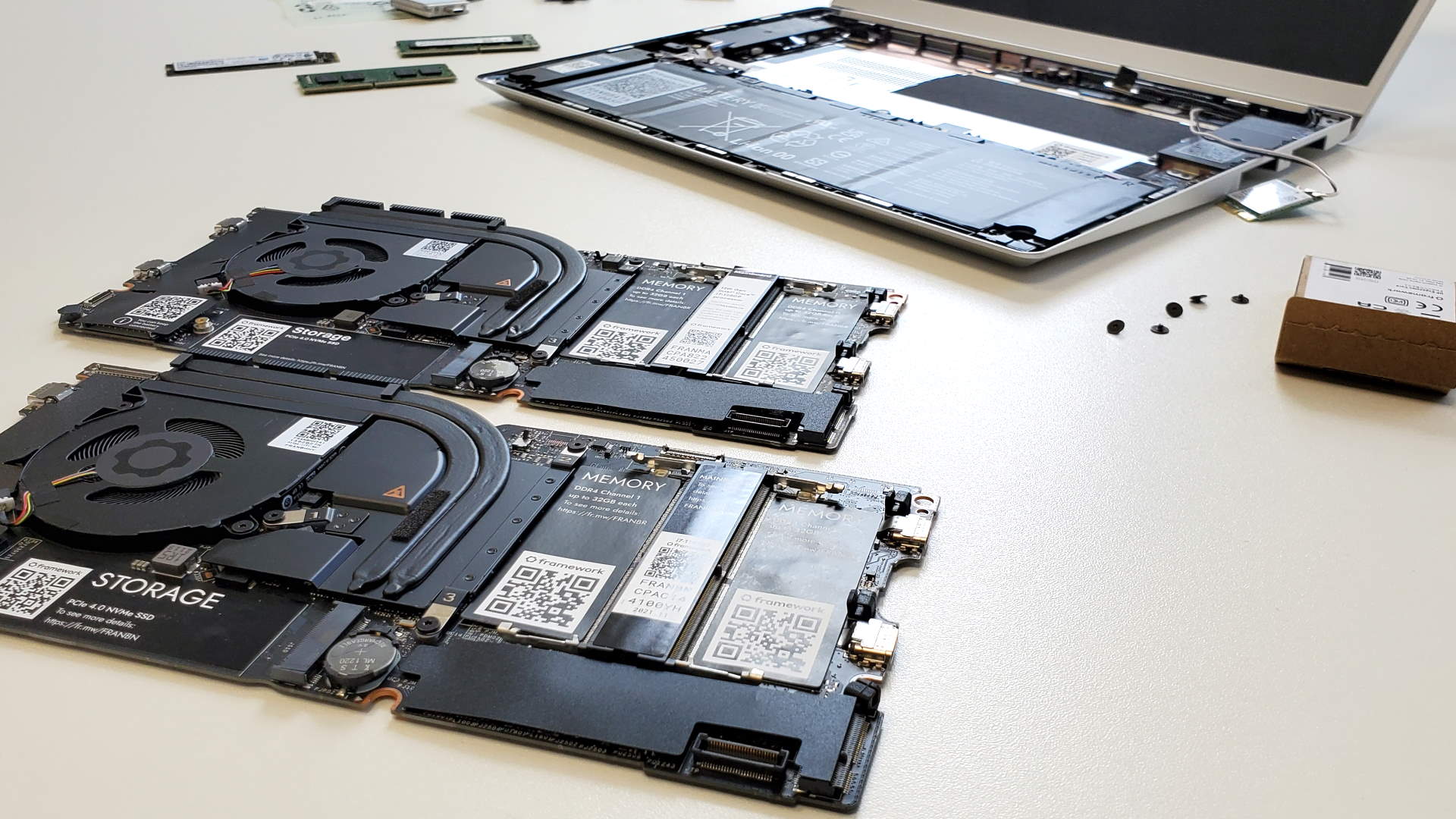
And that's why the whole upgrade process is so quick. And powerful.
In CPU terms, I've practically doubled the performance of the Core i7 1185G7 chip previously in there, and it now flies. Sadly, Intel hasn't upgraded the GPU side of things in shifting to Alder Lake, so it's still the same Iris Xe with just 96 execution units, and so 720p gaming on this gorgeous 3:2, 2256 x 1500 resolution screen is all you're going to get out of it.
System performance
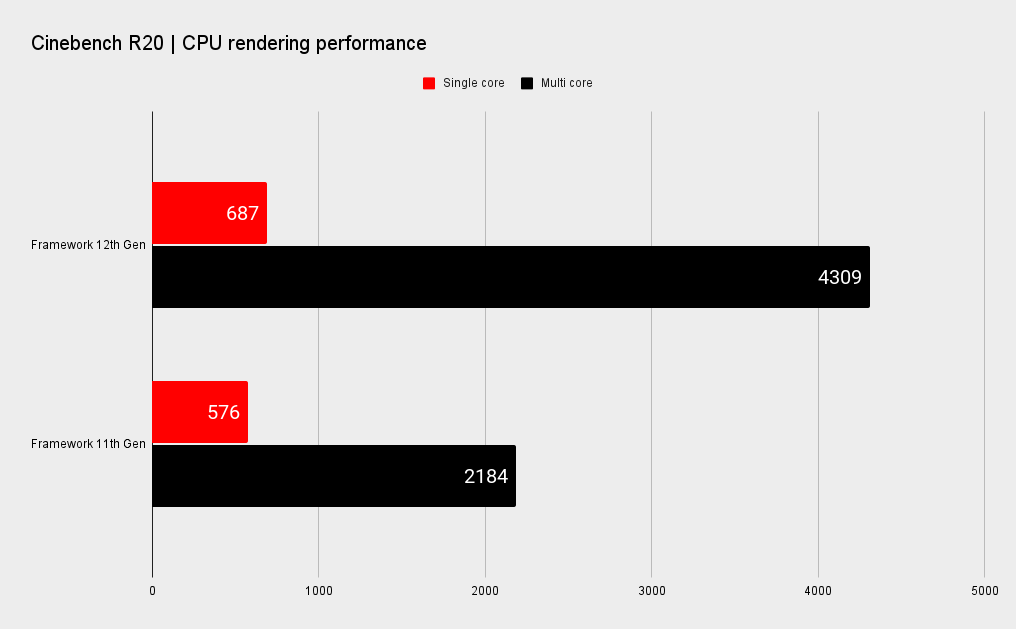
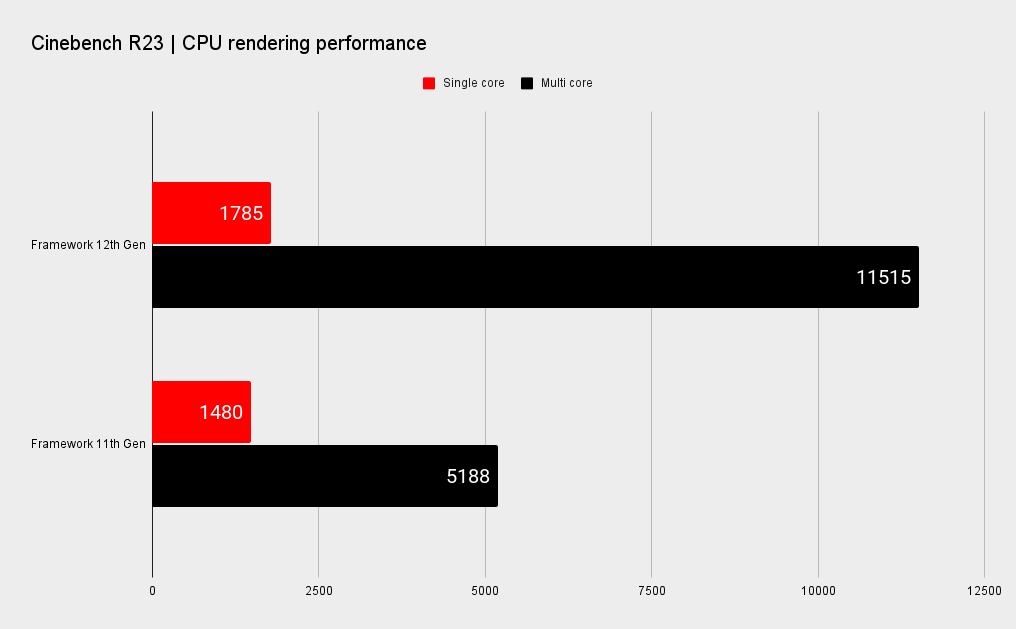

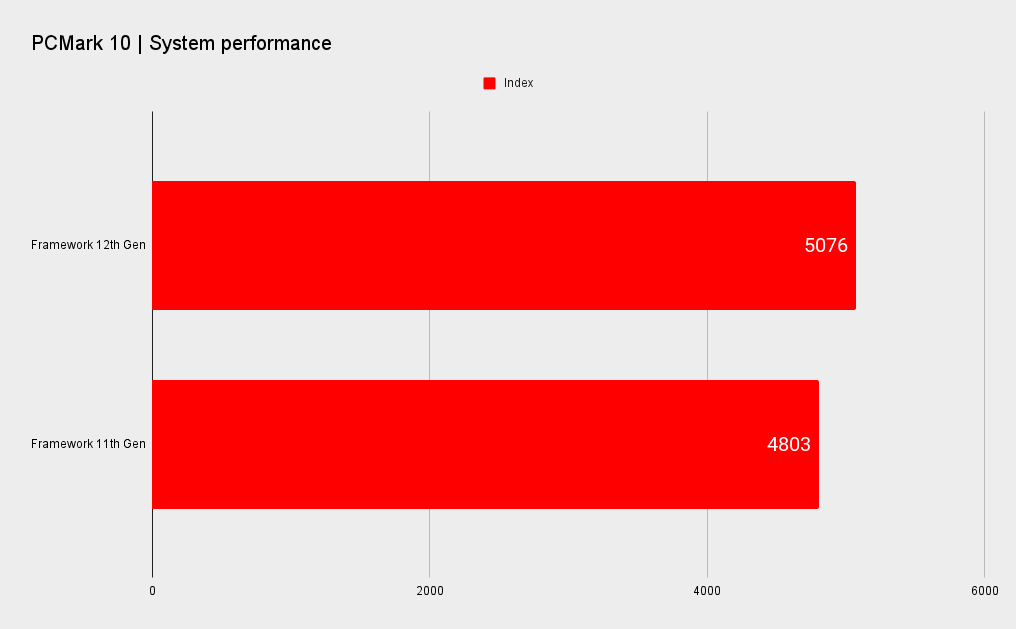

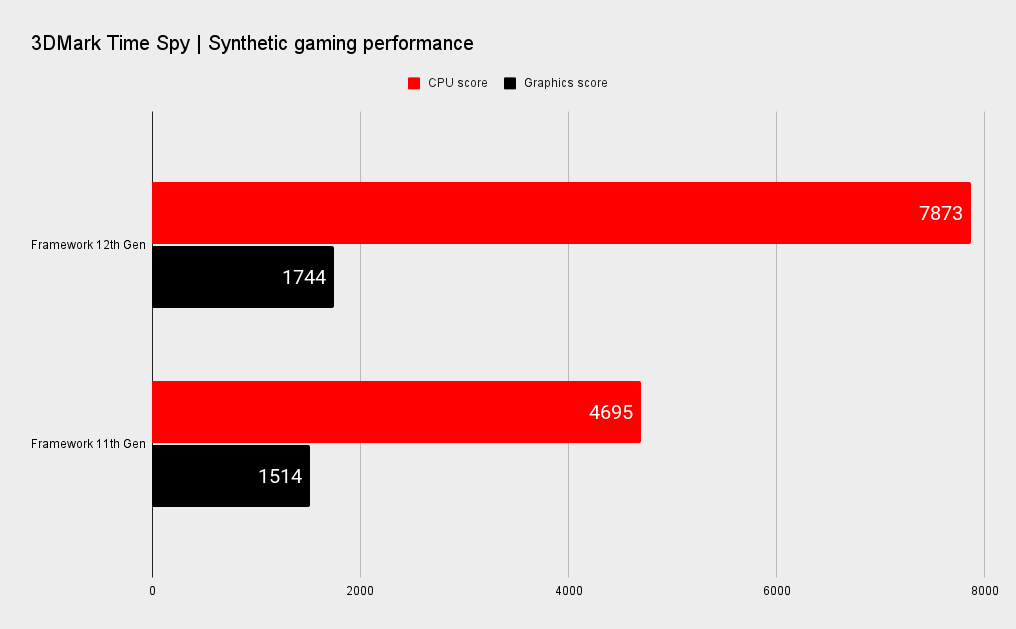

Being able to do that with nothing more than the handy double-ended screwdriver/spudger that comes with the Framework machine is pretty incredible, more so because of how quick it is. The online upgrade guide is simple and straightforward, with clear imagery and advice to stop you ham-fistedly yanking out wires with gay abandon.
Yes, the $1,049 mainboard is a lot of cash, but arguably less than a full i7 Alder Lake machine might cost, and without the e-wastage, too. Speaking of which, once you've pulled the old 11th Gen board out, what then?
Well, you could always do a funky DIY project, like this adorable wee terminal, with the old board. It's essentially a full system, that just needs memory, storage, and a display.

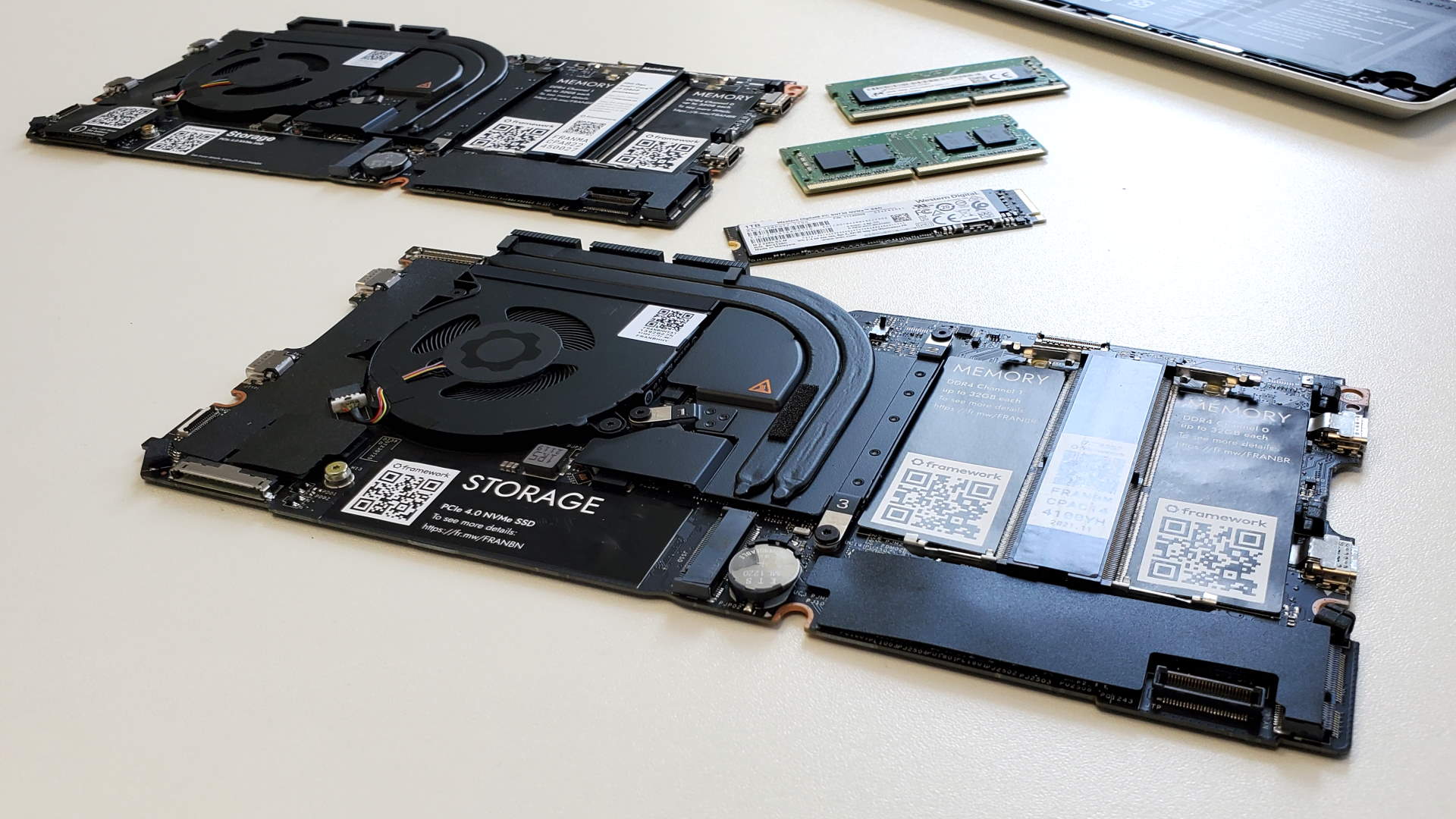

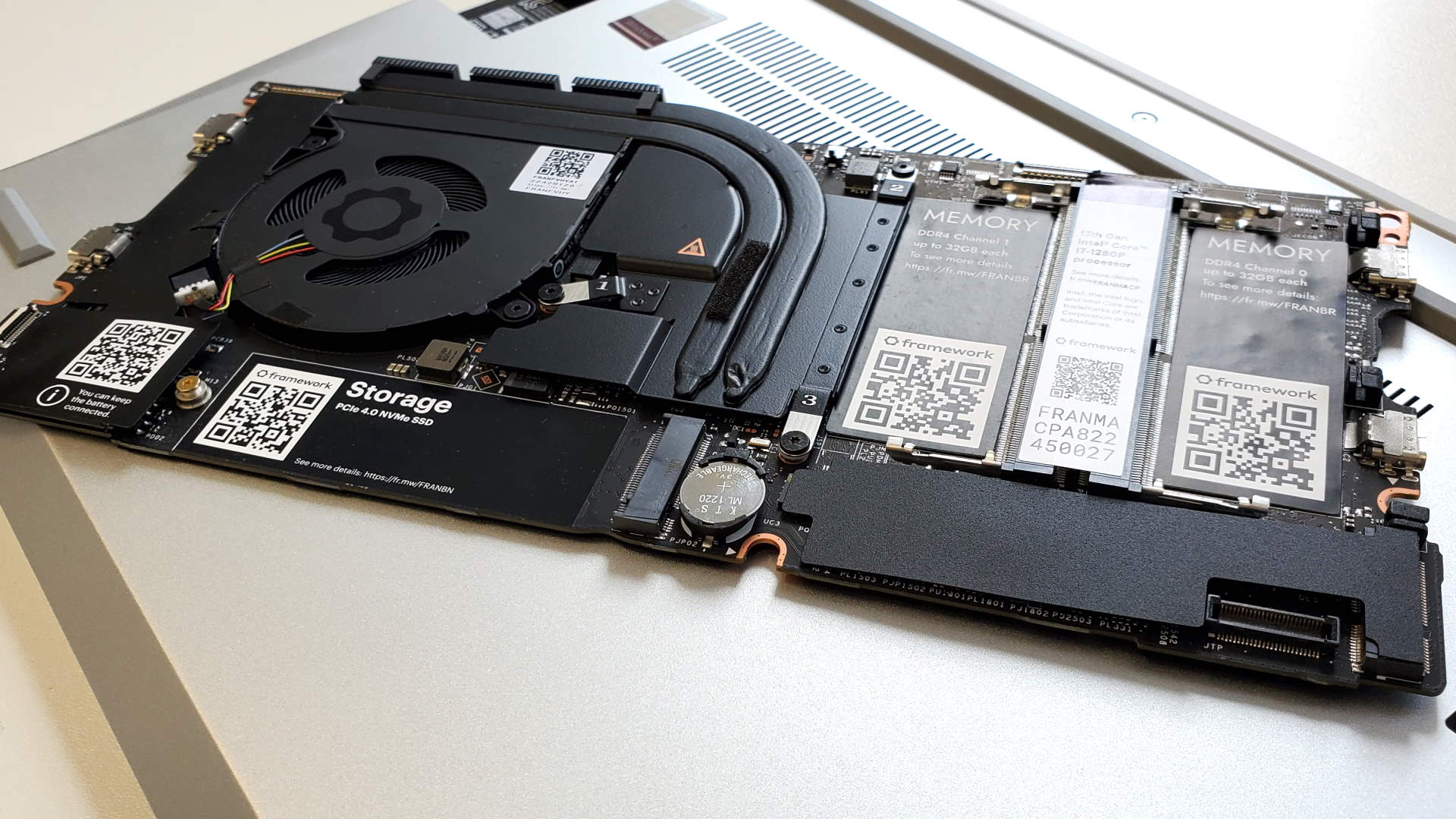
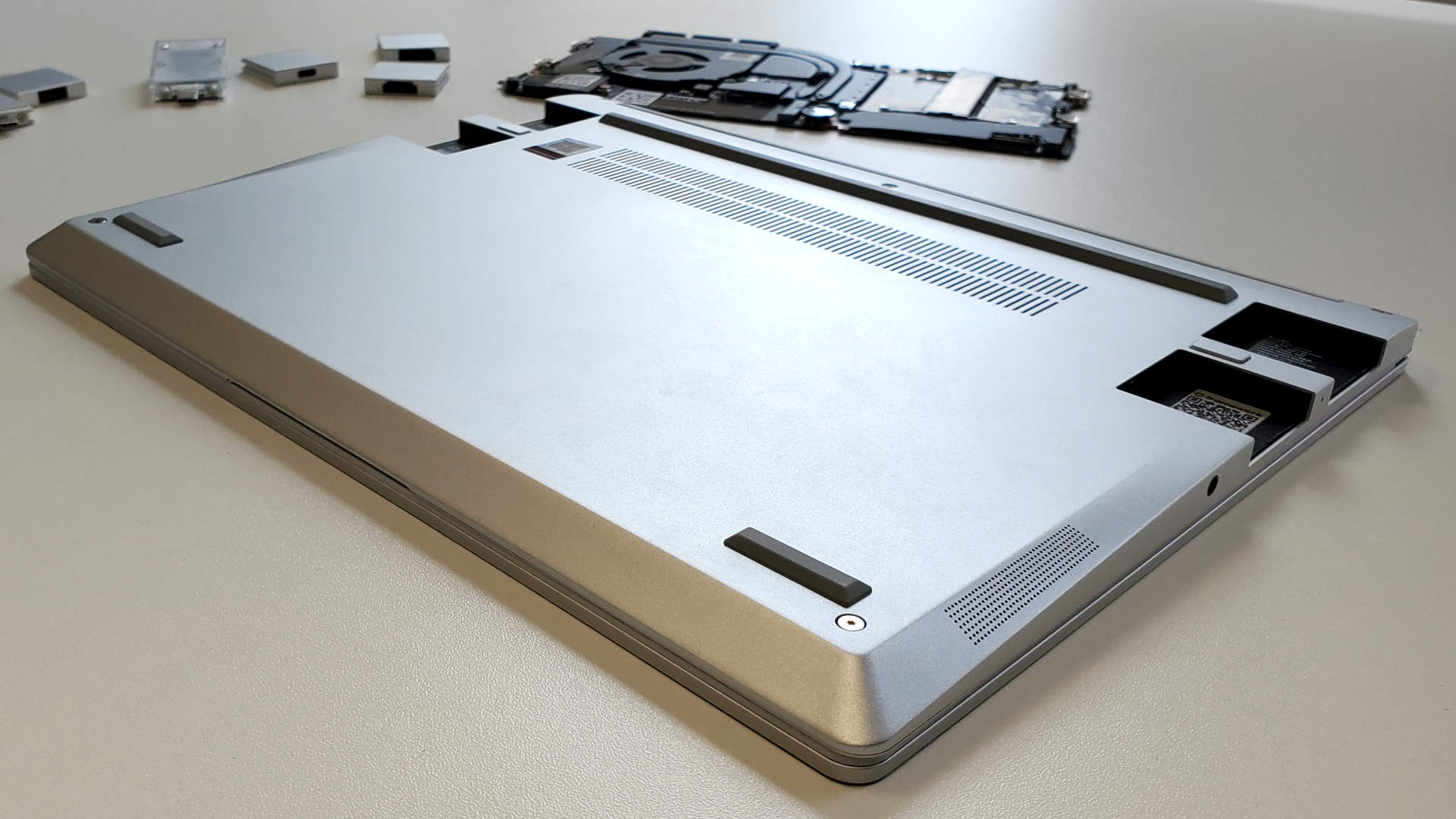
But yes, gaming performance hasn't improved, but therein lies my sincere hope for the future of gaming laptops if Framework can figure out a way to get it working. It must be said, there is nothing currently in the works from Framework on that front, but the original idea behind the old MXM laptop graphics module was future upgrades. So there's history, technology, and the abolute potential for genuinely upgradeable laptop graphics cards, which means it's got to be possible, right?
Of course there are power and thermal constraints to deal with, especially if you're talking about upgrading from a lower performance chip to a higher spec one. But there is precedent on that front, too. After all, Razer's Blade chassis hasn't changed in three years—using the same cooling for multiple generations of Nvidia graphics silicon—and that's worked out so far. If there was a way for a user to change the GPU in those machines the cooling and power setup could cope with a huge range of different chips.
And, having experienced the easy upgrade process of completely changing the entire compute platform of the Framework laptop, I'm now dreaming of a day when you can buy a new GPU module, as easily as you can buy a desktop graphics card, and drop it into your gaming laptop for moar fps.
And it's maybe not that far away now.

Dave has been gaming since the days of Zaxxon and Lady Bug on the Colecovision, and code books for the Commodore Vic 20 (Death Race 2000!). He built his first gaming PC at the tender age of 16, and finally finished bug-fixing the Cyrix-based system around a year later. When he dropped it out of the window. He first started writing for Official PlayStation Magazine and Xbox World many decades ago, then moved onto PC Format full-time, then PC Gamer, TechRadar, and T3 among others. Now he's back, writing about the nightmarish graphics card market, CPUs with more cores than sense, gaming laptops hotter than the sun, and SSDs more capacious than a Cybertruck.

